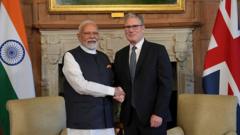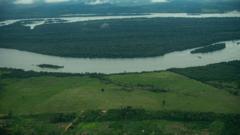In a bold move to boost tourism in remote regions, Nepal announced that 97 peaks will be free to climb for the next two years, coinciding with a significant increase in climbing fees for Mount Everest.
Nepal Unveils Free Climbing Initiative to Boost Tourism Amid Everest Fee Hike

Nepal Unveils Free Climbing Initiative to Boost Tourism Amid Everest Fee Hike
Nepal's tourism sector launches a campaign to attract climbers to lesser-known peaks as Everest permits increase.
Nepal's tourism department has initiated a plan to waive climbing fees for 97 Himalayan peaks, aiming to revitalize tourism in the underdeveloped Karnali and Sudurpaschim provinces. This decision is timely, as permit costs for Everest, the tallest mountain in the world, will escalate to $15,000 starting September—the first hike in nearly a decade. The initiative seeks to promote Nepal's diverse tourist destinations and enhance economic opportunities in areas often overlooked by climbers.
Climbing generates substantial revenue for Nepal, bringing in approximately $5.9 million last year, with Everest contributing the lion's share. The waived fees will apply to peaks ranging from 5,970 meters to 7,132 meters high, situated in some of the country's most impoverished provinces. The Director of Nepal's Tourism Department, Himal Gautam, expressed hope that the new initiative would not only draw tourists but also create jobs and bolster local economies, as access has historically deterred visitation to these stunning locations.
However, ambiguity looms over potential infrastructure improvements to accommodate an influx of climbers and how local communities will adjust to increased tourism. Recent data indicates a lack of interest in these peaks, with only 68 climbers attempting summits in the past two years compared to 421 for Everest in 2024.
Alongside tourism efforts, Nepal's Supreme Court recently mandated limits on Everest climbing permits due to concerns over overcrowding and environmental impacts. Furthermore, the government has raised Everest climbing fees by 36% and plans to enact a new law requiring climbers to conquer a mountain over 7,000 meters before tackling Everest, positioning the newly accessible peaks as prime training locations.
Climbing generates substantial revenue for Nepal, bringing in approximately $5.9 million last year, with Everest contributing the lion's share. The waived fees will apply to peaks ranging from 5,970 meters to 7,132 meters high, situated in some of the country's most impoverished provinces. The Director of Nepal's Tourism Department, Himal Gautam, expressed hope that the new initiative would not only draw tourists but also create jobs and bolster local economies, as access has historically deterred visitation to these stunning locations.
However, ambiguity looms over potential infrastructure improvements to accommodate an influx of climbers and how local communities will adjust to increased tourism. Recent data indicates a lack of interest in these peaks, with only 68 climbers attempting summits in the past two years compared to 421 for Everest in 2024.
Alongside tourism efforts, Nepal's Supreme Court recently mandated limits on Everest climbing permits due to concerns over overcrowding and environmental impacts. Furthermore, the government has raised Everest climbing fees by 36% and plans to enact a new law requiring climbers to conquer a mountain over 7,000 meters before tackling Everest, positioning the newly accessible peaks as prime training locations.
















